Two years ago I visited Khonoma village, which is about 2 hours from Kohima (depending on road conditions). Unfortunately, the day I visited was terribly foggy and it was hard to see anything (see here). This time, I visited again shortly after the Hornbill Festival. Thankfully the weather was much better, since I also came with a friend from Australia who may not have another chance to come back.
Now, there are some friends who don't feel that Khonoma needs any special mention or recommendation. Even among my Angami friends, people from Khonoma are often perceived as being particularly proud, arrogant even. The village itself is famed for its defiance of the British which culminated in the Battle of Khonoma in 1879 that resulted in the deaths of a number of British soldiers.
The villagers even manufactured their own guns, based on models acquired in the plains of Assam. This particular gun required two people to hold it up, while a third person loaded it.
Another reason for the perceived 'smugness' might be because the village has also produced a number of intellectuals. I'm told the reason for this is that during the British siege, the villagers smuggled out a number of kids to Dimapur where they eventually received their education (and hence the overall better standard of education in the village compared to others in Nagaland). I'm not quite sure how true this is, but in the absence of other explanations, I'm willing to accept it. The village also produced a number of founding members of the Naga independence movement, including Phizo himself.
My Angami friends in Kohima organised the visit for us. We had a local guide named Michael, who used to be the president of the students' union here (I believe), and who was very knowledgeable about the village's history.
I don't normally do such recommendations, but I was quite impressed by his role in organising the members of the village to maintain its cleanliness and preserve the local wildlife. I would say that many villages in Nagaland could benefit from learning from Khonoma's system of organisation, but I don't want to inflate the villagers' egos any further!
If you are interested in visiting Khonoma village, you can contact Mr Michael Saphi (Khonoma Tours & Treks) at +91 98 5655 9394.
Now, there are some friends who don't feel that Khonoma needs any special mention or recommendation. Even among my Angami friends, people from Khonoma are often perceived as being particularly proud, arrogant even. The village itself is famed for its defiance of the British which culminated in the Battle of Khonoma in 1879 that resulted in the deaths of a number of British soldiers.
The villagers even manufactured their own guns, based on models acquired in the plains of Assam. This particular gun required two people to hold it up, while a third person loaded it.
Another reason for the perceived 'smugness' might be because the village has also produced a number of intellectuals. I'm told the reason for this is that during the British siege, the villagers smuggled out a number of kids to Dimapur where they eventually received their education (and hence the overall better standard of education in the village compared to others in Nagaland). I'm not quite sure how true this is, but in the absence of other explanations, I'm willing to accept it. The village also produced a number of founding members of the Naga independence movement, including Phizo himself.
In any case, Khonoma is a pleasant place to visit if you're in Kohima for the Hornbill Fesitval (although the Southern Angami villages past the Kisama Heritage Village are also quite picturesque - but that's for another post). It prides itself on being a 'green village', and there are rubbish bins all over the village which to my eye are actually used. To my surprise, I learnt that the village still has a functioning morung, a kind of dormitory where young men were sent to learn about traditional ways and to form bonds with members of their peer group. (It was even more of a surprise for me because Hutton in his book The Angami Nagas mentions that the morung wasn't very significant to the Angamis). Some villages also had a female equivalent, although I was told there was none in Khonoma at the present time.
The streets are generally well maintained, with competitions between the various peer groups, known as peli in Tenyidie (the standard Angami dialect used in church and schools). Here, one can see the work of one peli working on a section of road, so that they don't get outdone by other peli who are in charge of other sections of the same road.
The streets are generally well maintained, with competitions between the various peer groups, known as peli in Tenyidie (the standard Angami dialect used in church and schools). Here, one can see the work of one peli working on a section of road, so that they don't get outdone by other peli who are in charge of other sections of the same road.
My Angami friends in Kohima organised the visit for us. We had a local guide named Michael, who used to be the president of the students' union here (I believe), and who was very knowledgeable about the village's history.
I don't normally do such recommendations, but I was quite impressed by his role in organising the members of the village to maintain its cleanliness and preserve the local wildlife. I would say that many villages in Nagaland could benefit from learning from Khonoma's system of organisation, but I don't want to inflate the villagers' egos any further!
If you are interested in visiting Khonoma village, you can contact Mr Michael Saphi (Khonoma Tours & Treks) at +91 98 5655 9394.

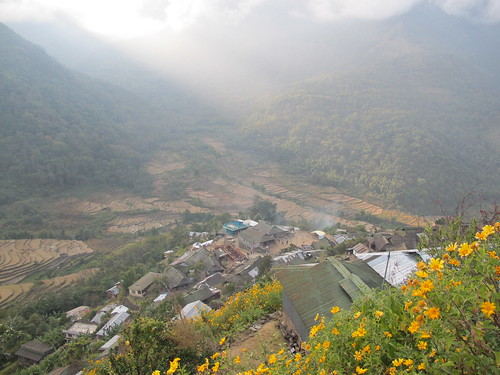
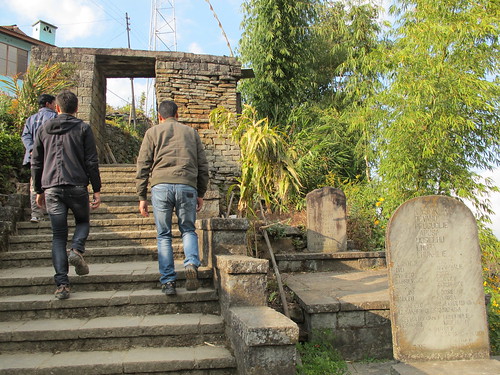

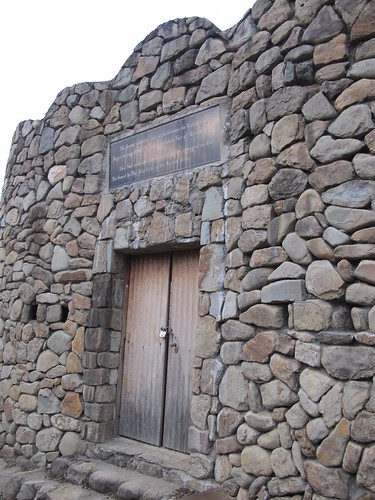
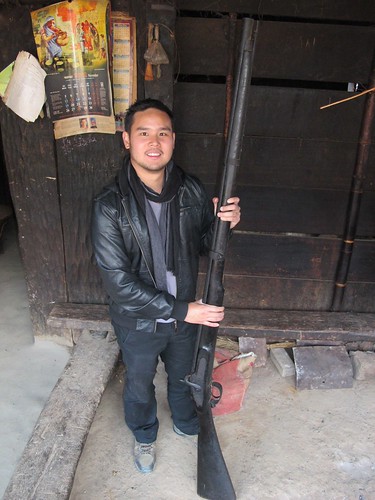
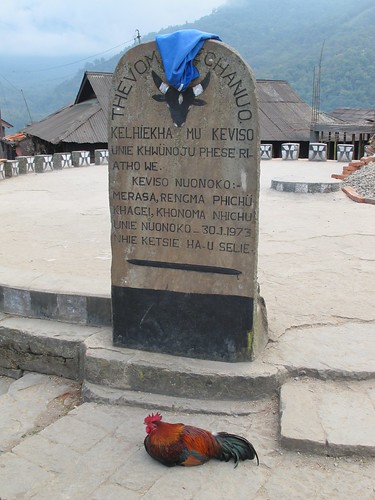

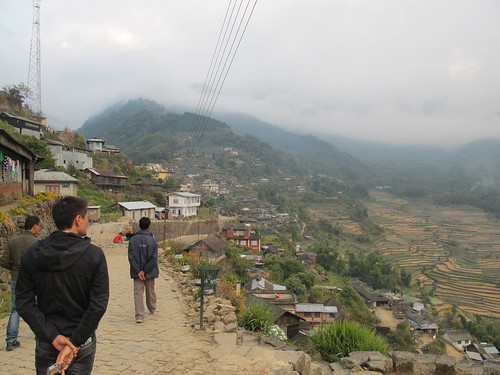
That's a really interesting post, I had been there a few years back with my dad who has just this March retired from the forest department. Their green conservation initiative was the purpose of the visit as it was a village initiative and there was no coercion from Govt bodies. If more villages could be educated and enlightened to the benefits of conservation Khonoma style then we could see true change occurring there in Nagaland.
ReplyDeleteAlso the crew served muzzleloader is fascinating indeed, should look it up next time I head back to Nagaland.
i am an architecture student and am really interested to know whats the history of the kisama village and 16 hutments over there...representing different style of construction
ReplyDeleteHi Amos Teo
ReplyDeleteThanks for visiting my village Khonoma.
Sorry the wrong information given to you regarding the muzzle loading gun.
I am born and raised from that morung where the gun is kept. Went through your post and you seems fishy. Any ways the history and exact description of gun are mention below.
The famous Tenyimisi (muzzle loading gun) of Khonoma village.
The much tourist attracted muzzle loading gun at Hiekha kikie(Khonoma) was made by Pfüchü-u Punyü of Thevoma Khel probably during the early 1950’s. The exact manufactured year could not be ascertained as no written records were found. The year was therefore obtained through oral calculation. Pfüchü-u was well known for his expertise in handiwork since his early years and being gifted with skillful hands, his khel members requested him to make a big gun in order to maintain their honour and self respect (mhosho) of their khel and also which can be marveled at. The purpose of making this gun was therefore, definitely not for war or for that matter though some may assumed so. It is also learned that he was not paid for this undertaking but his junior peers as a group date returned the favour by helping him in his fields.
The barrel of this gun was made of a cannon’s barrel and so this gun is extraordinarily big comparing with other muzzle loading gun. It requires 7-8 men to fire and is loaded with gun powder of 10 times more than the normal muzzle loading gun. It was confirmed through some elders that the barrel of the gun was obtained from Kohima after the Japanese invasion in 1944 and it is said to have got permission while taking the barrel. It is a licensed gun today and is fired during festivals and other merry makings. In the present day the gun belongs to Thevoma khel and is kept at Punyii hou(morung).
Description of the gun.
1.Weight 14.750 kg
2.Length 6.8 ft
3.Barrel 4.6 ft
4.Thickness 6 mm
5.Cavity 2.5 inch
Do visit Khonoma again.
Thank You.
This comment has been removed by a blog administrator.
ReplyDelete